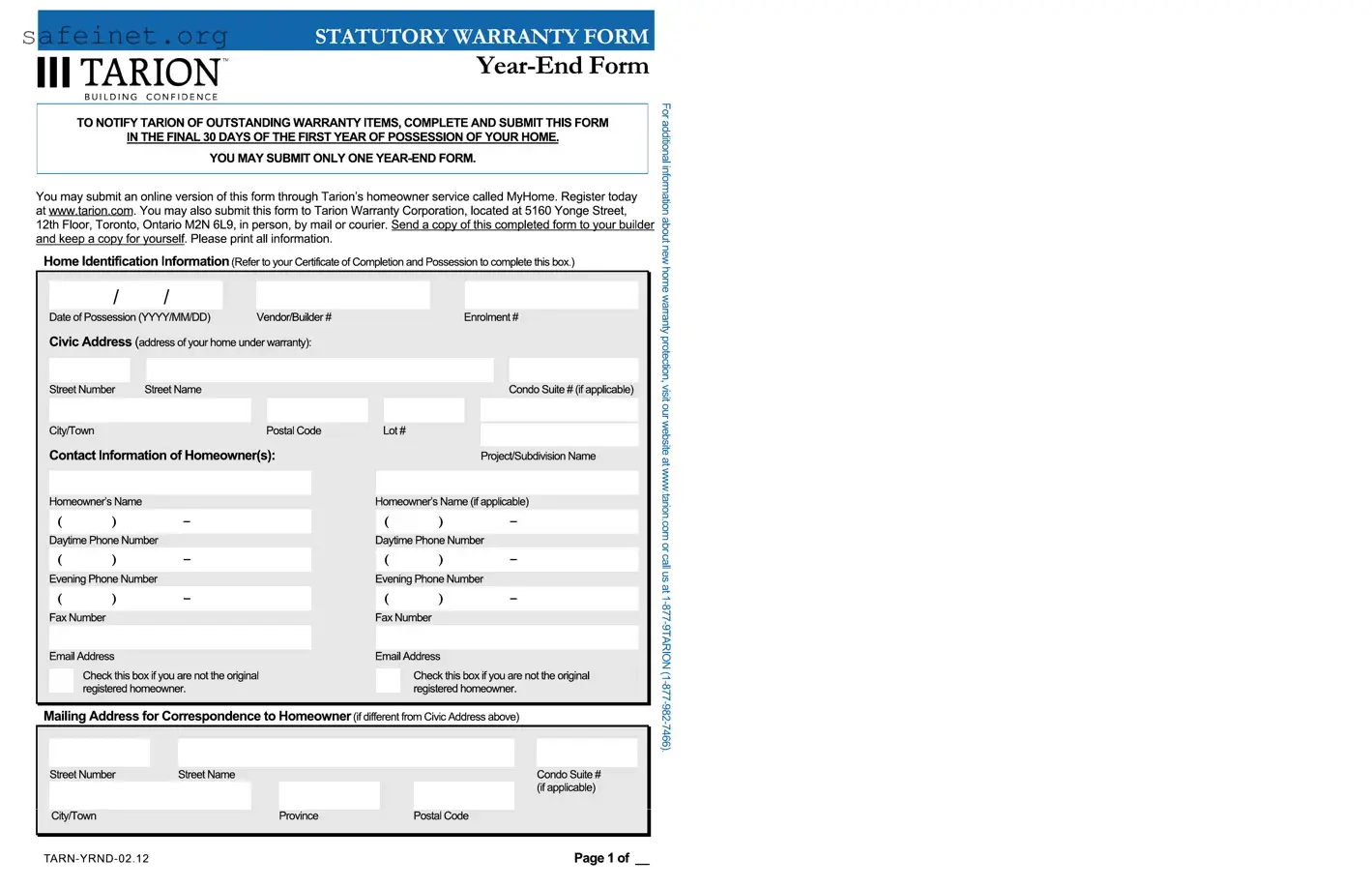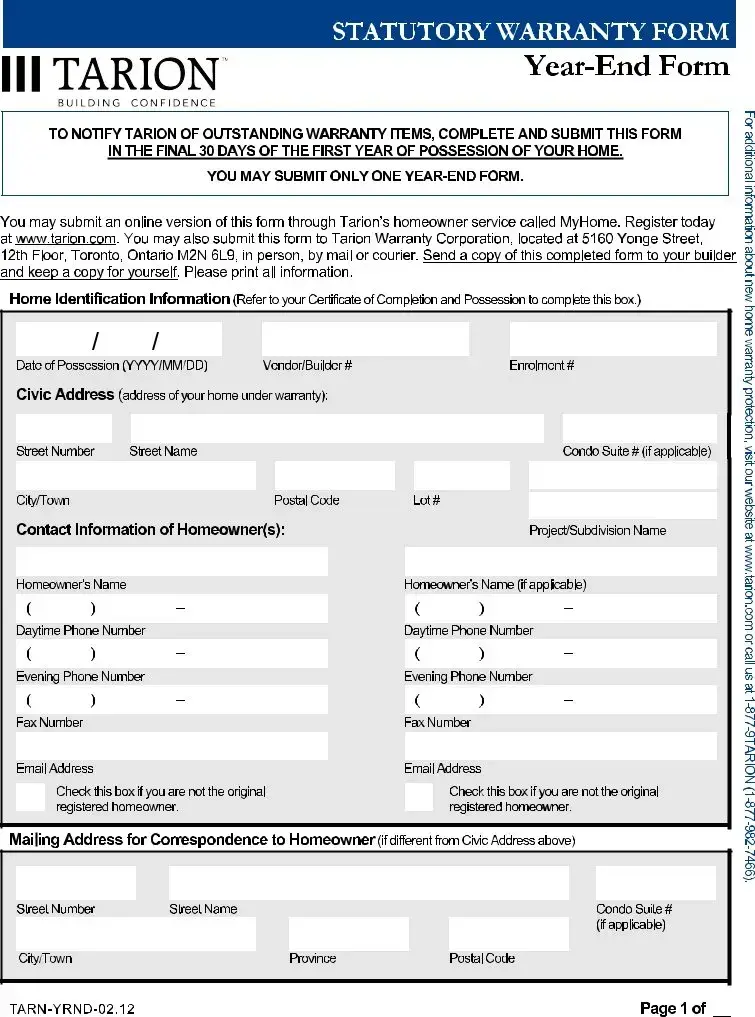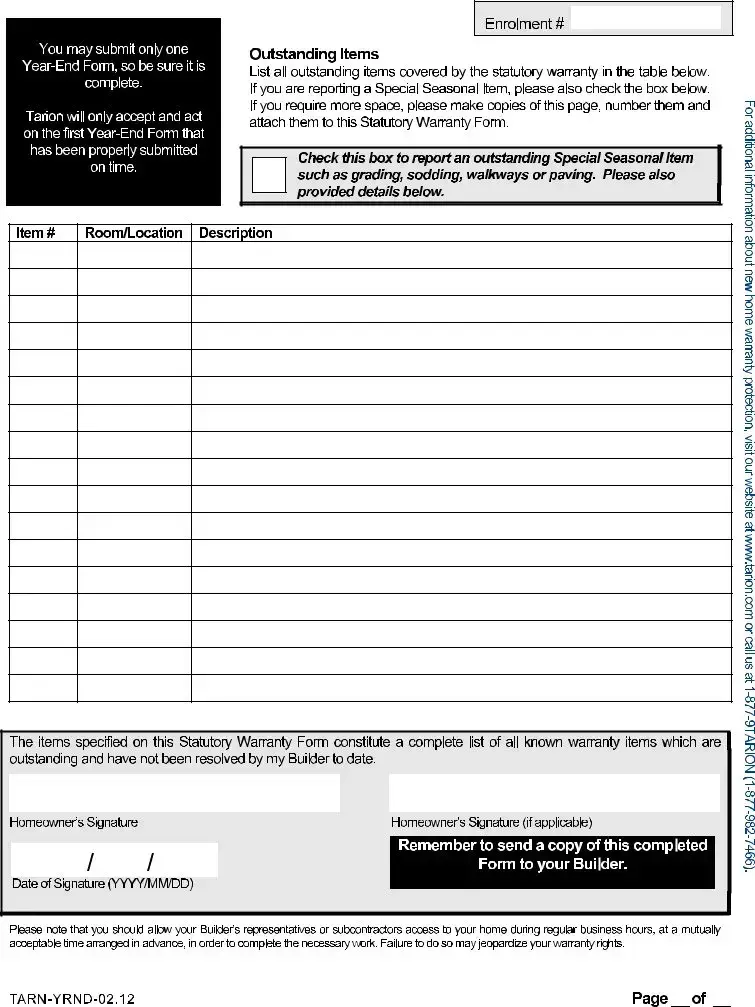The End Tarion form is similar to the Formal Complaint form used in various industries. Just as homeowners can submit the End Tarion form to address warranty issues with their builder, individuals use a Formal Complaint form to communicate grievances about services received. Both documents require detailed descriptions of the issues and the parties involved, ensuring that the recipient fully understands the concerns. Additionally, both forms are often time-sensitive, necessitating prompt submission to ensure the issues are addressed. Clear communication is essential in both cases to facilitate resolution.
Another document that bears similarity to the End Tarion form is the Warranty Claim Form. Like the End Tarion form, the Warranty Claim Form is designed for individuals to report specific deficiencies covered under a warranty. They both require homeowners or consumers to identify issues and provide corresponding documentation. The key difference lies in the scope of warranty claims; while the End Tarion form focuses specifically on new home warranties, Warranty Claim Forms can apply to a wider array of products and services, but both emphasize the importance of detailed lists of outstanding issues.
The Satisfaction Survey form is another comparable document. Homeowners may receive a Satisfaction Survey after completing a purchase or service experience. This form invites individuals to assess their overall satisfaction and highlight any problems encountered. Similar to the End Tarion form, feedback is solicited to improve future services. Both require the specific identification of issues, and importantly, both serve as a mechanism for voicing concerns while also seeking resolution.
The Repair Request form is yet another document that resembles the End Tarion form in its intent. Homeowners often use Repair Requests to inform landlords or property management about necessary repairs in rental properties. The format typically involves detailing the issues faced, much like the outstanding items listed in the End Tarion form. Both forms are tools to ensure that required work is documented, prioritized, and subsequently addressed in a timely manner.
The Maintenance Request form shares similarities with the End Tarion form as well. Property owners submit this form to request routine upkeep or repairs on their homes. These documents both require descriptions of maintenance needs, which ensures that the service provider understands what is required. The structured nature of both forms aids in tracking issues over time, ultimately helping to preserve the value and condition of the property.
A Completion Certificate Request form is another relevant document. Similar to the End Tarion form, this request seeks formal acknowledgment of work completed on a property. Individuals submit this request after the builder finishes repairs or improvements, ensuring that the work meets established standards. Both documents are critical for creating records that validate the completion of responsibilities under various agreements, helping protect the rights of homeowners.
The Inspection Report is another type of document that parallels the End Tarion form. An inspection report outlines the findings from a formal assessment of a property. While the End Tarion form is primarily for reporting warranty issues, inspection reports can highlight deficiencies and needed repairs during the sale or re-evaluation of a home. Both documents work to ensure that any significant issues are formally documented, drawing attention to areas that require resolution.
The Disclosure Statement can be closely related as well. When purchasing real estate, a Disclosure Statement informs potential buyers of known problems with a property. This mirrors the End Tarion form’s function of spotlighting issues requiring resolution within a specific warranty period. In both cases, transparency is critical, as it allows homeowners and buyers to make informed decisions based on the condition of the property.
Lastly, the Homeowner's Association (HOA) Violation Report form serves a similar function. Homeowners can use it to report infractions related to community rules and regulations. Like the End Tarion form, it outlines specific concerns and lists necessary corrective actions. Both forms ensure that issues are communicated clearly and effectively, fostering accountability among all parties involved.


